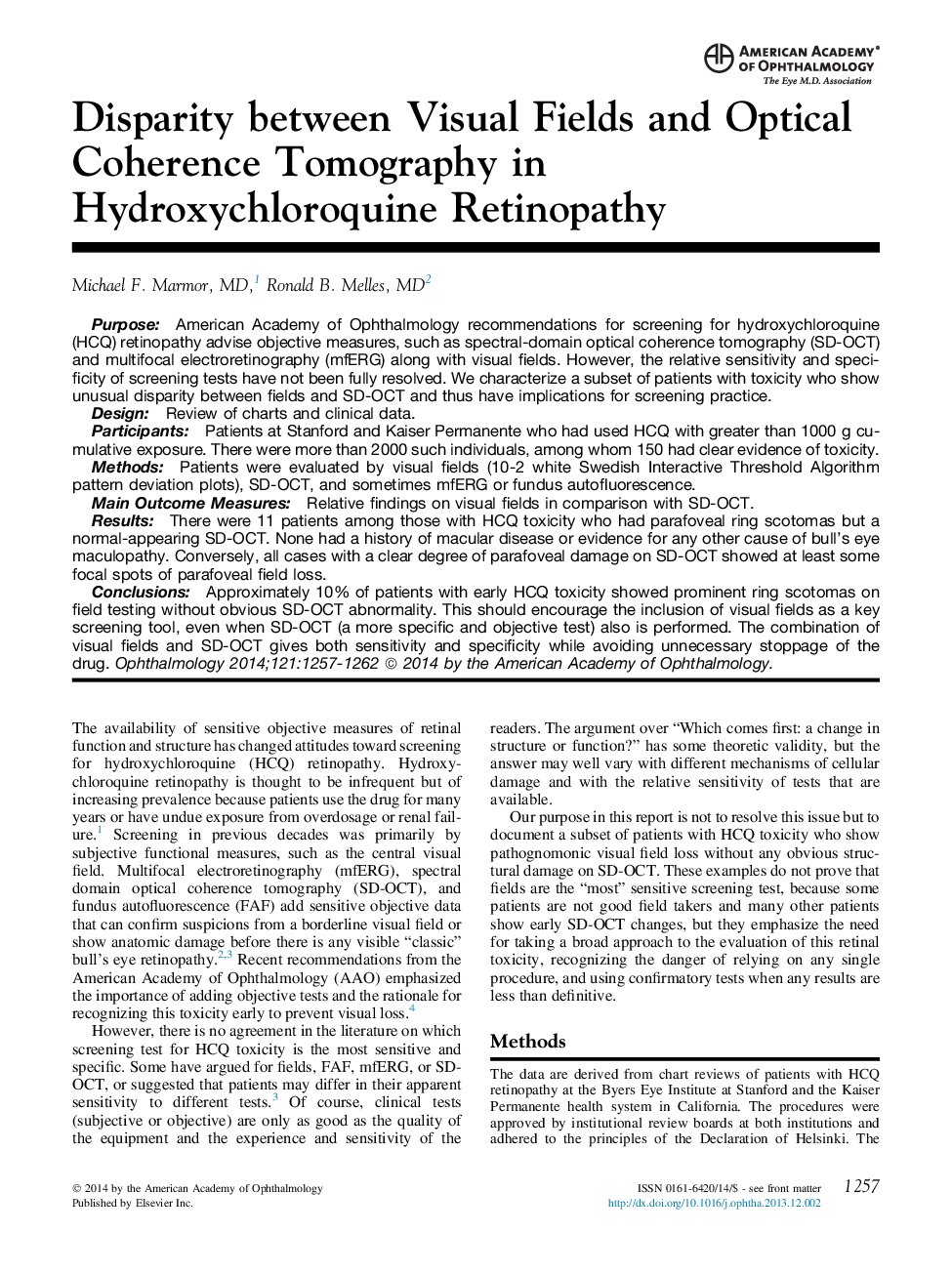| کد مقاله | کد نشریه | سال انتشار | مقاله انگلیسی | نسخه تمام متن |
|---|---|---|---|---|
| 4026044 | 1262418 | 2014 | 6 صفحه PDF | دانلود رایگان |
PurposeAmerican Academy of Ophthalmology recommendations for screening for hydroxychloroquine (HCQ) retinopathy advise objective measures, such as spectral-domain optical coherence tomography (SD-OCT) and multifocal electroretinography (mfERG) along with visual fields. However, the relative sensitivity and specificity of screening tests have not been fully resolved. We characterize a subset of patients with toxicity who show unusual disparity between fields and SD-OCT and thus have implications for screening practice.DesignReview of charts and clinical data.ParticipantsPatients at Stanford and Kaiser Permanente who had used HCQ with greater than 1000 g cumulative exposure. There were more than 2000 such individuals, among whom 150 had clear evidence of toxicity.MethodsPatients were evaluated by visual fields (10-2 white Swedish Interactive Threshold Algorithm pattern deviation plots), SD-OCT, and sometimes mfERG or fundus autofluorescence.Main Outcome MeasuresRelative findings on visual fields in comparison with SD-OCT.ResultsThere were 11 patients among those with HCQ toxicity who had parafoveal ring scotomas but a normal-appearing SD-OCT. None had a history of macular disease or evidence for any other cause of bull's eye maculopathy. Conversely, all cases with a clear degree of parafoveal damage on SD-OCT showed at least some focal spots of parafoveal field loss.ConclusionsApproximately 10% of patients with early HCQ toxicity showed prominent ring scotomas on field testing without obvious SD-OCT abnormality. This should encourage the inclusion of visual fields as a key screening tool, even when SD-OCT (a more specific and objective test) also is performed. The combination of visual fields and SD-OCT gives both sensitivity and specificity while avoiding unnecessary stoppage of the drug.
Journal: Ophthalmology - Volume 121, Issue 6, June 2014, Pages 1257–1262
